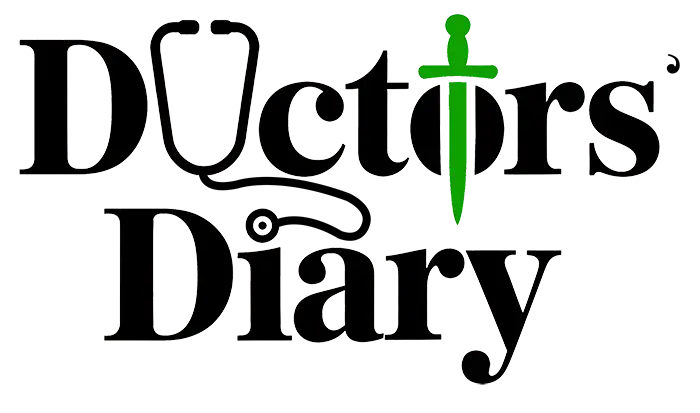The truth is, it has become cheaper to consume lies and misleading brief bits of information than to pay the price of *TIME and ATTENTION* to get credible and truthful information. All thanks go to the era of Shorts, Reels and the Scrolling Syndrome that many of us now suffer from. I dare you to read this when you have the chance and let me know if it was worthwhile.
*Is it really true that the ZMA NEC had their hands tied and couldn’t reverse the AGM decision?*
The answer is NO.
If you care for the truth, please take time to review this deep dive into the ZMA constitutional provisions that illuminate key facts about this delicate issue.
I want to start with stating that the ZMA constitution is and has always been the solution to all the ZMA challenges. Proper interpretation and adherence to the constitution would have prevented all ZMA problems today.
I want to submit to you that THERE WERE THREE (3) WAYS to constitutionally reverse the decision at the AGM to start deducting the building levy from all ZMA members. And it could have all been done in 40 Days or less. Read more for details.
*Method One – ZMA NEC Led Reversal (The Easiest)*
While the AGM is the highest decision-making body, the NEC can initiate a reversal process by calling an Extraordinary General Meeting (EGM):
Constitutionally Supported Method:
- Clause 8(d) allows the NEC to call an EGM at any time.
- At the EGM, members can discuss and vote to reverse, amend, or suspend the earlier AGM decision.
*Side Note:* At the coming AGM, a motion can be moved to not only stop the building levy deductions, but to even go to the extent of refunding all deducted members so far. If the motion is voted for, we can all get our money back. If that is what we want.
*QUESTION:* Does the ZMA Constitution state any condition under which an EGM cannot be held?
*ANSWER:* NO. The Zambia Medical Association (ZMA) Constitution does not state any conditions that prohibit an Extraordinary General Meeting (EGM) from taking place.
_Explanation_
The Constitution explicitly allows EGMs under two provisions:
- Clause 8(d):
_“The National Executive Committee may call an Extraordinary General Meeting of the Association at any time.”_
- Clause 8(e):
_“The Secretary General shall, on a written request signed by not less than one-third of the members of the Association, call an Extraordinary General Meeting of the Association.”_
No Clauses in the entire ZMA Constitution mention:
- Any time restrictions (e.g., cannot hold within a certain period after AGM)
- Any topics barred from discussion
- Any approval needed before calling the EGM
- Any reasons that invalidate an EGM call (so long as 1/3 of members sign or NEC initiates it)
*This means whatever reason was given was unconstitutional and an example of manipulation and abuse of authority*. As long as it is not in the constitution, it is not legitimate.
While those in defence might cite the idea of a quorum, it’s a non-starter discussion as quorum is an issue that happens on the day of holding the meeting, and just like the AGM, it is not a prerequisite to organise for it.
So, why didn’t the NEC lead the association in this path?
It’s simple, they didn’t want to because it didn’t serve their interests.
*Method Two – The General Membership Led Reversal (Intermediate level of Difficulty)*
If the NEC is unwilling or complicit, the general membership can force an EGM through the following constitutional provision:
Clause 8(e) of the Constitution:
_“The Secretary General shall, on a written request signed by not less than one-third of the members of the Association, call an EGM.”_
Steps:
- Draft and circulate a petition among members stating the need to reverse a specific AGM decision.
- Once ≥1/3 of members have signed, submit the petition to the Secretary General.
- The SG is then obliged to call the EGM within a reasonable timeframe.
- At the EGM, a vote can be taken to reverse or amend the AGM decision.
*QUESTION:* What can be considered a reasonable timeframe according to the constitution statement?
*ANSWER:*
_”Reasonable time”_ is interpreted as what a prudent, fair-minded person or organization would consider sufficient time to act, without undue delay and with proper notice to all concerned parties.
_Explanation_
Unfortunately, the phrase “within a reasonable timeframe” in the ZMA Constitution is not explicitly defined with a specific number of days. However, based on best practices in governance, common usage in Zambian professional associations, and general interpretation of similar constitutional phrases, here is how it can be understood as follows:
Reasonable Timeframe – Interpreted Practically:
- Typically between 14 to 30 days
This range is standard in many associations’ constitutions and reflects:- Time to verify the request
- Time to prepare and distribute notices to members
- Time for members to make logistical arrangements to attend
- Guided by the urgency of the matter
- If the issue raised is urgent or critical, a shorter timeframe (e.g. 7–14 days) could be considered reasonable.
- For less urgent issues, 21–30 days is fair and acceptable.
- Precedent and customary practices within ZMA or similar organizations may also inform what’s “reasonable.” If ZMA has in the past called EGMs within 21 days, that may be seen as the norm.
So, why didn’t the ZMA NEC lead the general membership in this path?
It’s simple, they didn’t want to because it didn’t serve their interests.
*Method Three – Harnessing the Constitutional Power of Membership to force a Reversal (Hardest level of Difficulty)*
This method reminds the general membership that those who created the ZMA constitution were wise to prepare for tyrant kind of leaders who per-adventure may end up in the top seats. They ultimately gave back all the power to the mere general membership.
I already shared the details of this method in an earlier write-up on this group.
Its simple, if ZMA membership is not compulsory, but rather voluntary, this means all paid-up members have to make the decision of staying members every day, and not the other way around.
The constitution gives all members the right to resign their membership at any time, and places no restriction whatsoever on rejoining the association at any time.
This means the membership can collectively use this power to steer the association in the direction that is acceptable by the majority, or otherwise it would lead to the very demise of the association if the leadership stays hard-headed.
This Programmed Cell Death Model (Apoptosis) protects members from tyranny. If you resign as a member, ZMA has not right to deduct not only the building levy, but also membership fees.
You get your Whole K500 back, at least until they NEC it willing to play the role of good leaders again. If the resolution of the matter comes, you simply rejoin with ZERO penalty or cost. In fact, you save a K500 for each month that you were not a member.
Free tip for those who are in a financial crisis and need to reclaim their payslip.
- Write a resignation letter to ZMA SG
- Then ask the internal auditor or HR at your pay point to halt ZMA deductions.
- When you are in a better place, you simply need to reverse the deduction process with internal auditors or HR. The moment ZMA deducts you in the next month, you are now a fully paid-up ZMA member again.
It is that easy. And guess what? This is a ZMA constitutional provision, not a loophole.
If all members or 85% of them hypothetically resign just for the purpose of pressuring the leadership into a decision, the very power the NEC is trying to use against its members will have no relevance. Losing 85% of its members even for just a month means colossal income losses for ZMA, especially at this rate of K500 per member.
To summarise method 3, the membership can use the power that matters the most; *FUNDS* as a bargaining tool to negotiate with a stubborn and unyielding NEC.
Someone once told me that I was exposing the loopholes of the ZMA constitution. I corrected them quickly and told them that these are not loopholes at all. These are protections that the ZMA constitution gives to its members. To cover them and protect them from abuse of power, tyranny and disunity.
So then, why did the outgoing ZMA NEC withhold these solutions from the membership? Why did they give the impression that they had power over the members? Or that they had no means of reversing the AGM decision of building levy deductions?
The ZMA constitution clearly and indirectly outlines these methods.
Why would a good leader, instead of sharing this information with the members instead choose to capitalise on the ignorance of the members to push an agenda that didn’t sit well with over 1000 ZMA members?

















No Comments